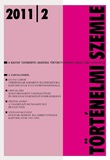Az erdélyi örmények hitvallása 1692-bõl
The Confession of the Armenians of Transylvania in 1692
Author(s): Kornél NagySubject(s): History
Published by: Magyar Tudományos Akadémia Bölcsészettudományi Kutatóközpont Történettudományi Intézet
Summary/Abstract: Hungarian archives have preserved relatively few sources concerning the church history of the Armenians in Transylvania. Among the exceptions are the so-called Hevenesi and Kaprinay Collections in the Library of the Eötvös Loránd University, and the manuscript collections regarding the archiepiscopate of György Széchényi (1685-1695), preserved in the Primate’s Archives at Esztergom. Most of the manuscripts preserved in these public collections are of crucial importance for the research of Hungarian and international ecclesiastical history, and, moreover, these collections host one of the most valuable, and mostly unresearched, group of sources with regard to the history of Catholic renewal in Hungary. The fundamental source of the Armenians’ church union, which is published in the present paper together with an analysis of the circumstances among which it was born, can also thank its survival to the activities of the Jesuit school of historiography and source collection. The Hungarian Jesuit fathers followed foreign models when they began the systematic collection of documents relating to the history of Hungary and Transylvania, and the composition of large-scale historical works. These enterprises were motivated partly by the considerations of Catholic Renewal, partly by an effort to advance the writing of history. It was also in the Hevenesi Collection that the Latin manuscript concerning the confession of the Armenians of Transylvania was recently found. The document was dated 20 June 1692, and countersigned on 30 August of the same year at Beszterce.The origins of this document may be connected to another document from the year 1693 called Fidelis relatio, for it tried to give exact and unambiguous answers to the questions of faith which had been formed in the wake of the Armenian ecclesiastical conflicts of Beszterce and Ebesfalva in 1692. The manuscript is, as indicated in the introduction, a contemporary copy. The original was drafted in Romanian by the Armenians in Transylvania, explaining the confession of the Uniate Armenians in the Principality. Indeed, the document was meant to prove beyond doubt that by 1692 the Armenians living in Transylvania had become definitively the adherents of the Roman Catholic faith. The original Romanian document was probably lost, the copy which has survived in the Hevenesi Collection is written in Latin. The present study seeks to answer the question of whether the content of the document published here is in keeping with the contemporary historical conditions, that is, whether the Armenians of Transylvania were indeed uniformly uniates in 1692.
Journal: Történelmi Szemle
- Issue Year: 2011
- Issue No: 02
- Page Range: 283-313
- Page Count: 31
- Language: Hungarian

